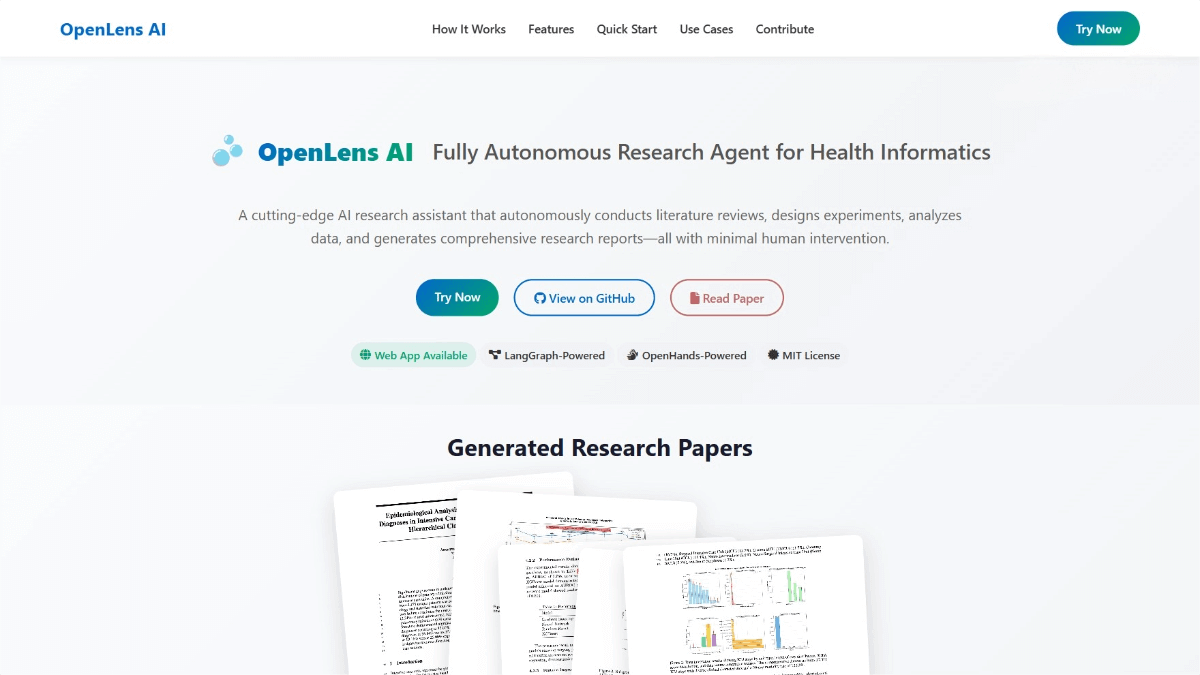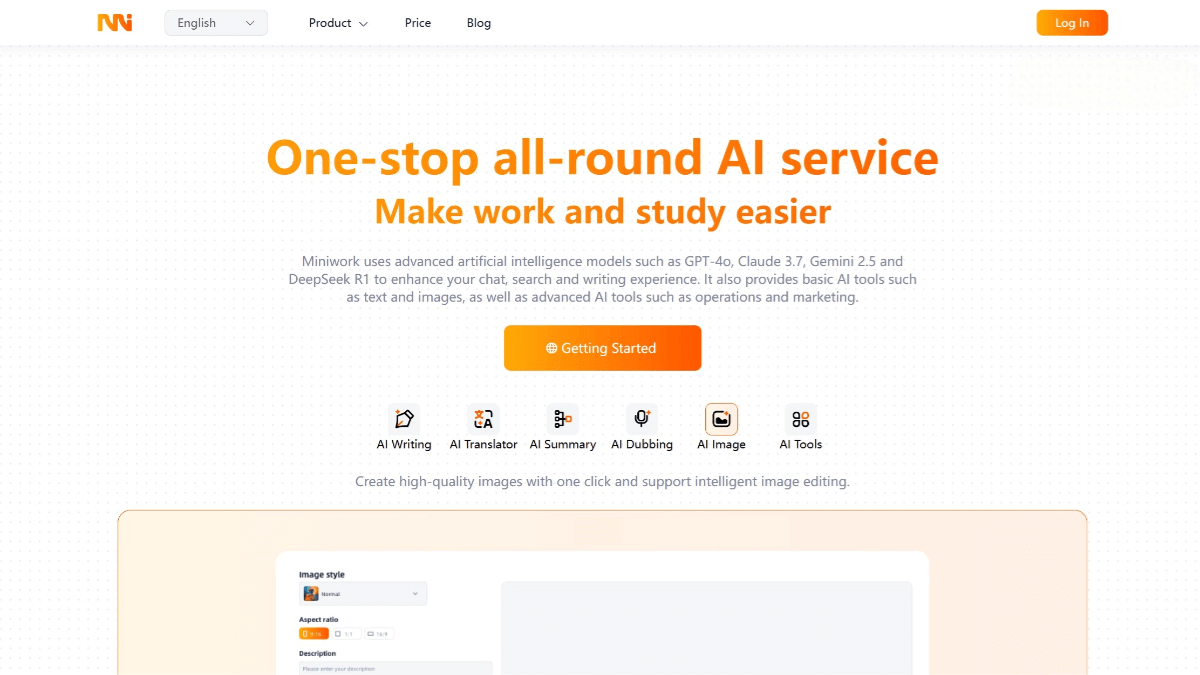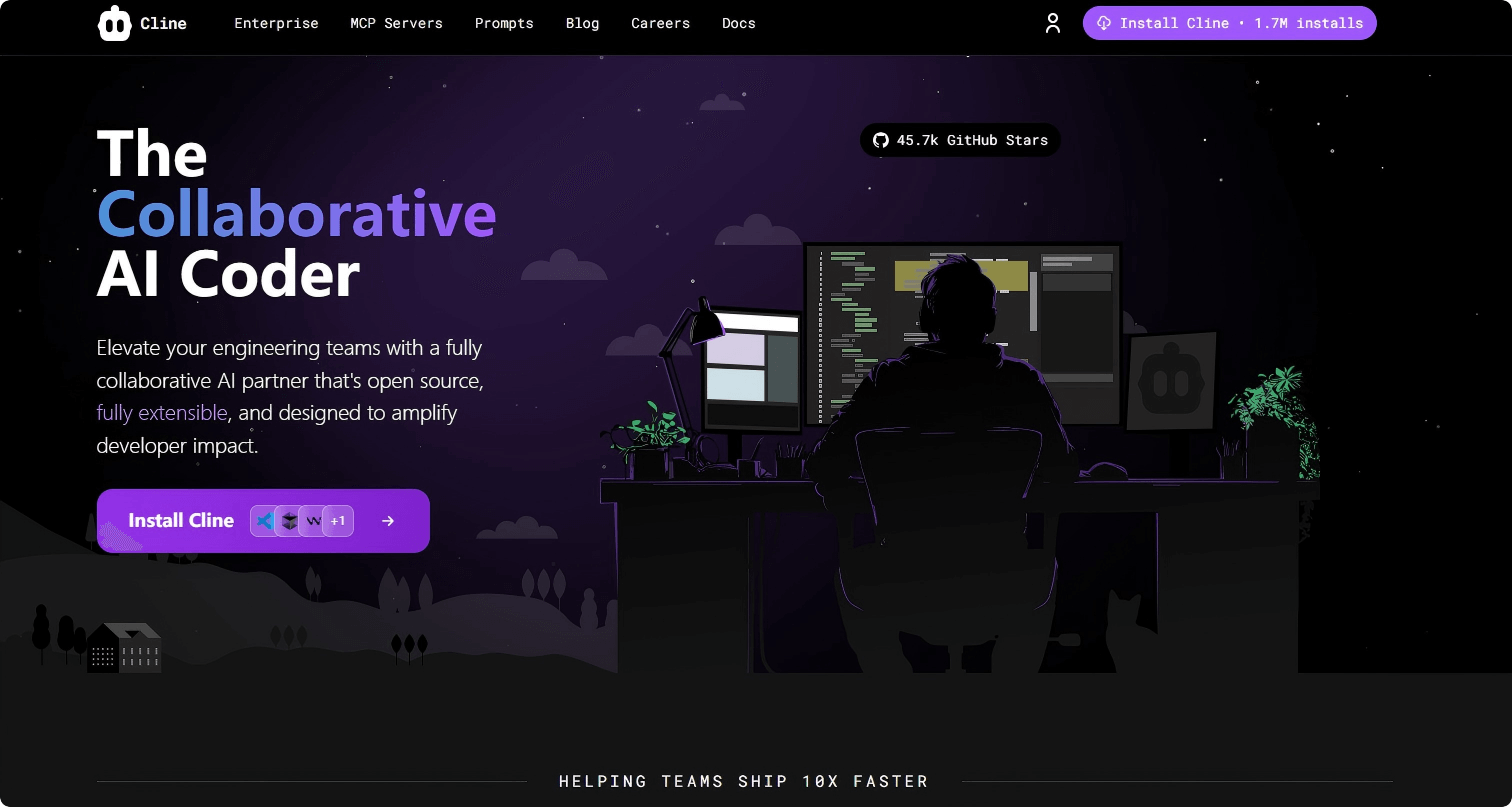OpenLens AI – Medical Research AI Assistant Developed by Tsinghua University
What is OpenLens AI?
OpenLens AI is an autonomous artificial intelligence research assistant developed by the Department of Automation at Tsinghua University, specifically designed for medical research. Through multi-agent collaboration, it automates the entire research pipeline—from literature review and experimental design to data analysis and paper generation—dramatically improving research efficiency and reducing the scientific cycle from months to hours. The system integrates multiple quality control mechanisms to ensure the reliability and reproducibility of research results. The launch of OpenLens AI marks the beginning of the “zero-human” era in medical research, signifying a major shift in the scientific research paradigm.

Key Features of OpenLens AI
-
Literature Review:
Automatically retrieves and synthesizes relevant literature using a ReAct-based reasoning framework, providing a comprehensive and accurate theoretical foundation for research. -
Experimental Design:
Generates detailed experimental plans based on user research questions, converts them into executable code, and supports various experimental setups. -
Data Analysis:
Processes diverse types of medical data (such as time-series data and genomic information) to produce structured, interpretable insights with visualizations, statistical summaries, and natural language explanations. -
Paper Writing:
Integrates outputs from all modules to generate high-quality scientific papers in LaTeX format, ensuring consistency in figures and formatting. -
Quality Control:
Incorporates academic rigor checks, evidence traceability, literature verification, and visual–language feedback to guarantee the scientific validity and reproducibility of results.
Technical Principles of OpenLens AI
-
Multi-Agent Collaboration:
-
Supervisor Module: Acts as a global coordinator, decomposing user queries into structured subtasks to maintain transparency and explainability.
-
Literature Reviewer: Builds an autonomous knowledge exploration pipeline using a ReAct reasoning framework to retrieve and synthesize scientific literature.
-
Data Analyst: Manages multi-stage data processing, transforming raw medical data into structured, interpretable insights.
-
Encoder: Converts high-level experimental plans into executable code and evaluates output quality using vision–language models.
-
LaTeX Writer: Integrates all module outputs to produce publication-grade scientific manuscripts.
-
-
Modular Architecture:
Each agent focuses on a specific task. The modular design enhances system flexibility and scalability, while standardized interfaces enable smooth collaboration and ensure workflow coherence and efficiency. -
Quality Control Mechanisms:
Automatically validates the soundness of experimental methods, detects data leakage and invalid performance metrics, and ensures scientific robustness.
The system links every research claim to its underlying evidence, generating structured traceability reports for transparency.
It verifies all cited references, checks metadata accuracy, and removes unverifiable entries to maintain academic integrity.
At key stages, the system assesses figure quality and provides perceptual feedback, enhancing the readability and scientific validity of outputs.
Project Links
-
Official Website: https://openlens.icu/
-
GitHub Repository: https://github.com/jarrycyx/openlens-ai
-
arXiv Paper: https://arxiv.org/pdf/2509.14778
Application Scenarios of OpenLens AI
-
Disease Prediction Modeling:
Develops disease prediction models based on historical patient data, such as predicting acute kidney injury (AKI) with high accuracy. -
Drug Interaction Research:
Analyzes the latest findings on drug–drug interactions, enhancing medication safety and therapeutic efficacy. -
Causal Analysis:
Employs structural causal models (SCM) to uncover underlying causal drivers of complex medical problems, such as factors leading to extended ICU stays. -
Medical Data Analysis:
Processes and analyzes medical datasets (e.g., MIMIC-IV and eICU) to produce statistical reports and visual analytics. -
Scientific Paper Generation:
Automates the entire process from research question formulation to paper writing, generating high-quality scientific publications and accelerating the pace of medical research.
Related Posts




